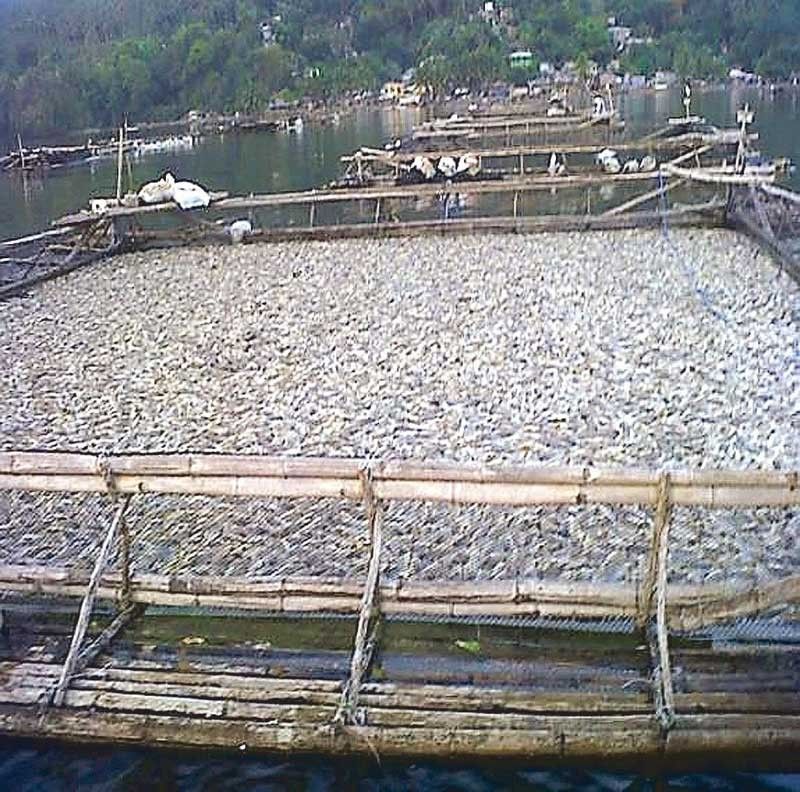The fishkill phenomenon

MANILA, Philippines — Fishkill or fishes dying all at once in great numbers recently struck Taal Lake, which did not escape media headlines last May 31.
One of the reasons for fishkill is linked to climatic conditions where weather effects in a locality like the Taal Lake region result in water conditions that are inimical to fish.
In 2014, the report of a multidisciplinary group of scientists under the research program Fishkill Early Warning System (FEWS) financed by the Philippine Council for Agriculture, Aquatic and Natural Resources Research and Development, established from data produced by Philippine Atmospheric Geophysical and Astronomical Services Administration and Bureau of Fisheries and Aquatic Resources from 1989 to 2011, stated fishkill in Taal Lake generally occurred between the 18th to the 35th week of the year.
Furthermore, fishkill occurrences showed that hibay (erratic swimming behavior) and gataw (gasping for air at water’s surface followed by possible death) in fish began with low incidence in early May and reached peak by month’s end.
PAGASA data showed this is the time when wind shifts direction owing to the southwest monsoon (habagat) taking over the northeast monsoon (amihan), the period described as intermonsoon (March to May). The cool northeast monsoon occurs from December to March, while southwest monsoon is from June to September.
A graph of the shifting wind direction within the 22-year period showed that when strength of this wind-shift blows to its first peak, there occurs a slowing down of velocity. This means the lake becomes calmer, and less waves mean less incorporation of oxygen coming from the air. Warm air in the summer months increases lake water temperature, in turn lowering the water’s capacity to take in oxygen.
Inside overstocked fish cages, oxygen supply is lessened by the heat and calmer water. Fish then have less air to breathe and gradually manifest hibay, then gataw, until they die floating at the surface with bloated stomach.
Since fishes die almost at the same time in great numbers, the phenomenon is called fishkill. Asphyxiation or lack of oxygen is often indicated as the cause of fishkill, but this may also be combined with toxicity.
Fishkill – May connection
Lake waters warmed by solar radiation in the summer months influence the rapid decay of organic matter courtesy of bacteria and fungi agents. When exposed to warmer temperature, these organisms tend to become more active in the decay process.
The most important organic substrates for decomposition are the feces of fish, the unconsumed supplementary fish feeds, dead algae (phytoplankton), zooplankton and other organics that people deliberately dump into the lake. Air-requiring or aerobic microorganisms are first to get to work in the organic decomposition process.
This biological process puts microorganisms in competition with fish for the oxygen dissolved in water. The fish whose physiology is adversely affected by lower oxygen are further put at a disadvantage by these competitors through the products of decay in the aerobic environment, namely: carbon dioxide, sulfate, nitrate and phosphate. As oxygen gets depleted, anaerobic (not oxygen-requiring) decomposition sets in to replace the aerobic process.
Anaerobic decomposition results in the production of carbon monoxide instead of carbon dioxide, and in the release of methane, ammonia, hydrogen sulfide and phosphine – all poisonous to fish. On land the odor produced is awful. In water the foul odor is dominated by the smell of sulfur. Conditions in this oxygen-depleted environment are made doubly lethal by the toxicants. Consequently fish succumb to gataw where they float to the surface gasping for air, until in a few minutes, they die en masse.
Lake management and law Implementation
Taal Lake is a resource that is grimly in need of improved management and implementation of existing laws. The mayors of lakeshore localities, and the big-time fish cage owners are all involved in the regular meetings called by lake management, the Protected Area Management Board-Taal Lake Protected Landscape. Some of them were also involved in drafting the section on the Unified Rules and Regulations for Fisheries.
In such meetings the optimum stocking density, or what we call the “biological red line” is discussed lengthily then decided on by a confluence of opinions in accord with advice from BFAR and academe.
But sometimes, the lure of higher profits takes the upper hand and fish cage operators experiment on the recommended stocking density to test if a little more would not do any harm. The consequences of such experimentation are there to see but apparently, to the fish cage owners, the risk is worth taking.
And so, a fishkill phenomenon puts to task the fish cage operators in loading tons of dead fish into their burial grounds.
Lessons from Laguna de Bay
The country’s experience in Laguna de Bay provides some lessons from which to address lake management. The biological red line had been exceeded in that 90,000-hectare lake, the largest in the Philippines.
Laguna de Bay suffers due to many factors that caused it to “age” rapidly, and continues to do so. High soil erosion that led to a high siltation rate has deposited sediments that reach up to three meters thick. In such environment, the generated waste load exacerbated by humans could not be effectively degraded. Fish productivity is thus diminished and fish quality is downgraded.
After its heyday in the 70s to the early 80s, Laguna de Bay now presents a window to the possible aftermath of a neglected lake. It would be to the best interest of all concerned that we opt not for a high profit in the short term, but for a sustainably moderate, but long lasting profit in the long-term.
It would be for the good of the people and the natural resource like Taal Lake that people participate in lake protection and conservation, because good stewardship of a natural resource is a collective responsibility.
The author is a doctor of philosophy and professor emeritus of Environmental Science in UP Los Baños. Her research on fishkill in Taal Lake has led to work on the restoration and rehabilitation of degraded streams.
- Latest





























